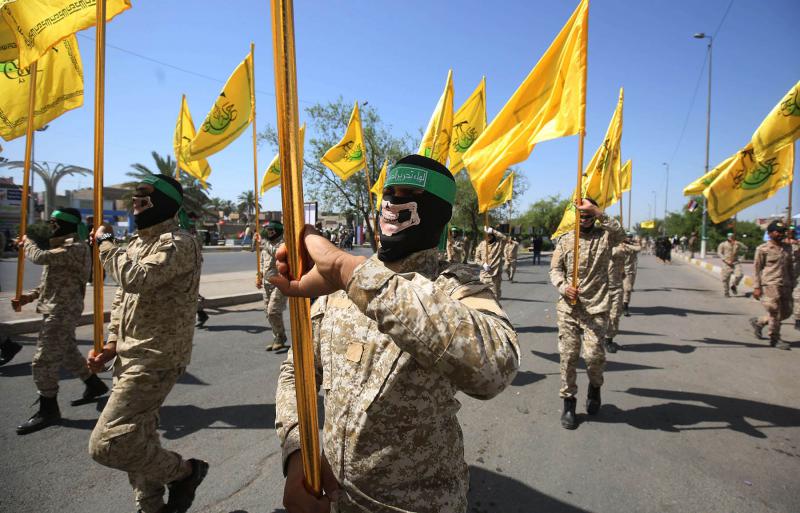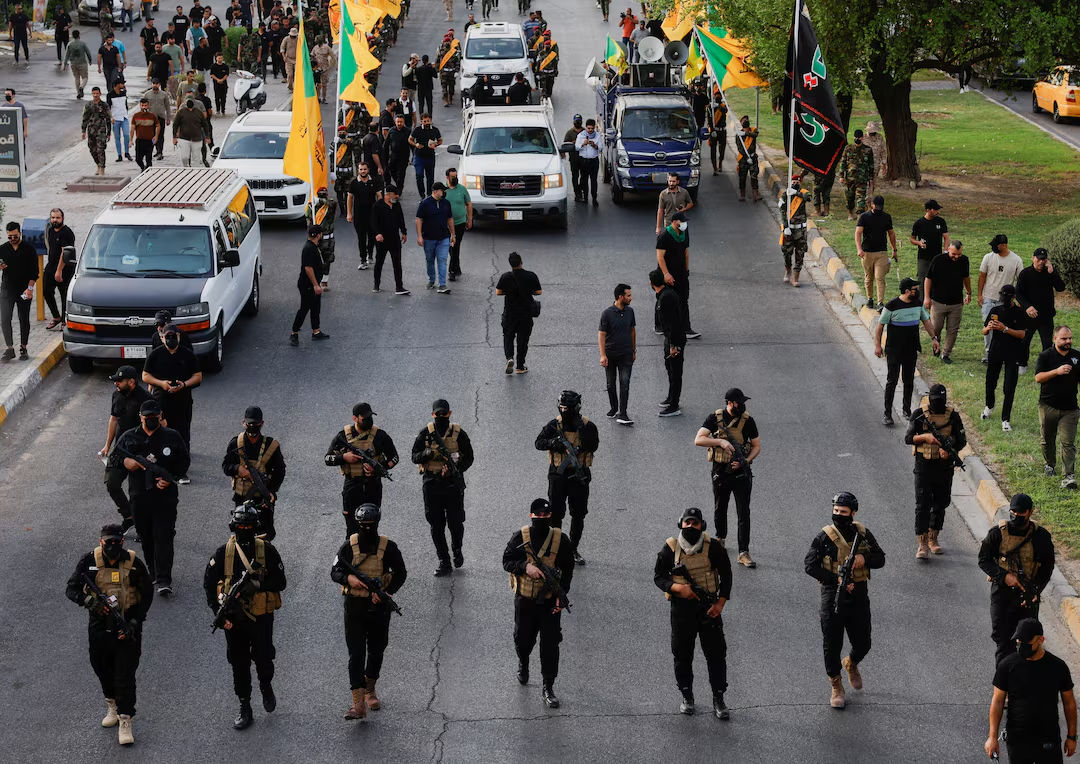Several Iran-backed Militias in Iraq groups in Iraq have taken a momentous step by agreeing to disarm, aiming to prevent an escalation of military conflict with the United States. This agreement, one of the first of its kind, marks a major shift in the delicate political and military landscape of Iraq. The U.S. had previously issued stern warnings, promising to launch airstrikes against militia positions if they did not cease their activities. This decision to disarm comes after a series of warnings from the U.S. government, which made it clear that it would take aggressive military actions if these militias continued to threaten American interests and personnel in Iraq.
These militias, which are often referred to as the Islamic Resistance in Iraq, operate under the backing of Iran’s Islamic Revolutionary Guard Corps (IRGC). Over the past several years, the influence and power of these militia groups have grown significantly. With an estimated 50,000 fighters, they have been responsible for numerous attacks on U.S. and allied forces in the region, including missile strikes, drone attacks, and assaults on U.S. military bases in both Iraq and Syria. These activities have escalated tensions between the U.S. and Iran-aligned forces in the Middle East, leading to a volatile security situation.
The decision by these militias to consider disarming is an important development that could ease tensions in the region, but it remains to be seen whether this will lead to a lasting resolution or whether the situation will escalate once again. It represents a delicate balancing act, with Iraq caught between the conflicting interests of the U.S. and Iran. The Iranian-backed groups have long been a thorn in the side of the U.S., and their disarmament would be seen as a major victory for U.S. foreign policy in the region. However, such a decision also comes with risks, as it could provoke retaliation from Iran, which has made it clear that it will protect its allies in Iraq.

In an effort to negotiate a peaceful disarmament, the Iraqi government, led by Prime Minister Mohammed Shia al-Sudani, has facilitated talks between the militias and U.S. officials. Al-Sudani has been under intense pressure to rein in these militias, particularly as the U.S. continues to pressure Iraq to secure its sovereignty and limit foreign influence. Al-Sudani’s government has been seeking a diplomatic solution that would allow these militias to disarm and integrate into the broader political and security framework of Iraq. This could include the integration of militia fighters into Iraq’s official security forces or allowing them to become political entities.
Izzat al-Shahbndar, a prominent Shiite politician with close ties to Iraq’s government, has confirmed that these talks are progressing well. He noted that the militias are not opposed to disarmament as long as they are given political guarantees about their future role in Iraq’s governance. Many of the militia groups have expressed a desire to retain political influence, and there is concern that without such guarantees, they will resist disarmament and continue to act as independent factions with significant military power.
One of the key reasons behind the militia groups’ willingness to disarm is the growing threat of U.S. military retaliation. The U.S. has already conducted several airstrikes against militia positions in Iraq, targeting weapons depots and military infrastructure used by these groups. The Trump administration has made it clear that it will not tolerate any further attacks on U.S. forces or interests in Iraq and has warned that military force will be used if necessary. The threat of more airstrikes, combined with diplomatic pressure from the Iraqi government, has pushed the militia groups to the negotiating table in an effort to avoid further military escalation.
In the past few weeks, some of the militia groups have already begun to take steps to de-escalate the situation. They have started evacuating their strongholds and bases in urban areas like Baghdad, Mosul, and Anbar in a bid to reduce their visibility and avoid being targeted by U.S. forces. These groups are also reportedly changing their communication methods, using new mobile phones and altering their vehicles to avoid detection by U.S. intelligence services. These moves suggest that the militias are taking the U.S. threats seriously and are willing to make concessions to prevent further violence.
The Iraqi government, for its part, has been exploring ways to integrate these militias into the official security forces. One proposal involves offering militia members positions in the Iraqi Army or police, allowing them to continue receiving government salaries and resources while operating under the authority of the state. Another option is to allow these groups to transition into political parties, where they would have the ability to participate in Iraq’s democratic process and represent their interests within the political system. However, this would require careful negotiations to ensure that these groups do not retain too much power or influence over Iraq’s political institutions.
The situation remains fluid, and it is unclear whether the disarmament talks will ultimately lead to a lasting agreement. While the willingness of the militias to disarm is a positive sign, many obstacles remain. Some factions may resist fully laying down their weapons, and it is likely that many of these groups will continue to hold significant political and military influence in Iraq. The negotiations will also need to address the broader issue of Iraq’s sovereignty, as these militias have often operated with little regard for the authority of the central government. Disarming these groups will require not only military action but also political reforms that strengthen the ability of the Iraqi government to assert its control over all factions within its borders.
For Iraq, the disarmament of Iran-backed militias represents an opportunity to reduce sectarian violence and reintegrate these powerful armed groups into the broader political system. However, the process of disarming these militias is fraught with risks, as it could provoke retaliation from both Iran and the militias themselves. If the disarmament process is not managed carefully, it could lead to further instability in Iraq and the broader region.
In conclusion, the decision by Iran-backed militias in Iraq to consider disarming is a significant development in the ongoing struggle for control and stability in the region. While it offers hope for a peaceful resolution, it also presents challenges that will require careful diplomacy and a commitment to long-term solutions. The next few months will be critical in determining whether Iraq can successfully navigate this difficult process and ensure a more stable and peaceful future for its people.
Kurdistan’s Education Revolution: A Blueprint for Iraq’s Future



